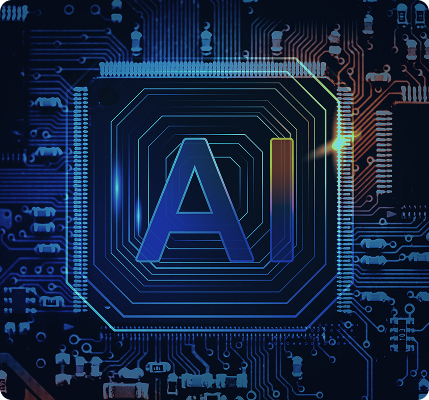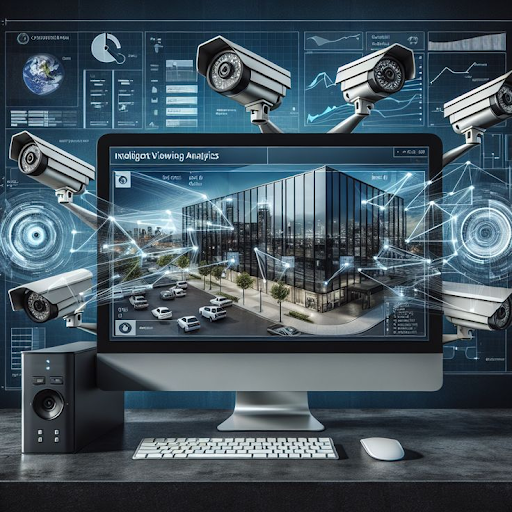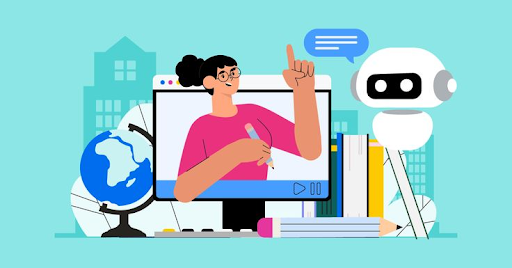AI Cameras in Retail and Customer Behavior Analysis
1. Introduction
The retail industry is undergoing a powerful transformation thanks to AI Camera technology. Not only serving as a surveillance system, AI Cameras also help measure customer traffic, analyze shopping behavior, and optimize store layout, thereby enhancing customer experience and increasing revenue.
This article will explore how AI Cameras support the retail industry, from data collection and behavior analysis to business strategy optimization.
2. AI Cameras in Measuring Customer Traffic
2.1. Tracking Customer Flow
AI Cameras help retailers measure the number of customers visiting stores by hour, day, or week. This data helps businesses:
- Identify peak times to adjust appropriate staffing levels.
- Compare customer traffic between holidays, promotions, and regular days.
- Evaluate the effectiveness of marketing campaigns through changes in customer traffic.
2.2. Identifying Customer Demographics
AI Cameras can categorize customers based on age, gender, and other characteristics. This helps stores:
- Better understand their main customer base.
- Adjust products and services according to the needs of each customer group.
- Establish more attractive promotional programs.
3. Analyzing Customer Behavior in Stores
3.1. Tracking Customer Movement Paths
AI Cameras can track customer movement paths within the store, helping store owners:
- Know which areas attract the most customers.
- Detect "dead zones" that receive little attention.
- Optimize product placement and walkways to improve shopping experience.
3.2. Identifying Stopping Points and Products of Interest
By analyzing where customers linger longer, AI Cameras can reveal which products or areas are attracting attention. This helps:
- Adjust shelves and signage to increase product accessibility.
- Identify products with sales potential or those needing improved display.
3.3. Detecting Purchasing Behavior
AI Cameras can recognize common purchasing behaviors, such as:
- Customers picking up products but not buying.
- Customers hesitating between multiple products.
- Group purchasing behavior.
This data helps stores offer appropriate promotions and improve the shopping experience.
4. Optimizing Store Layout and Sales Strategy
4.1. Enhancing Product Display Effectiveness
Based on AI Camera data, businesses can rearrange store layouts to:
- Place hot products in high-traffic areas.
- Adjust checkout counters and consultation areas to strategic positions.
- Create comfortable spaces, enhancing the shopping experience.
4.2. Personalizing Marketing Strategies
AI Cameras help collect data on customer preferences, behaviors, and visit frequency, thereby supporting:
- Creating personalized promotion programs based on shopping habits.
- Sending notifications or offers as soon as customers enter the store.
- Directing advertising campaigns based on actual target audiences.
5. Real-World Case Studies
5.1. Walmart Chain
Walmart has applied AI Cameras to monitor self-checkout counters and detect theft behaviors. As a result, merchandise loss rates have decreased significantly, while optimizing product placement based on customer behavior analysis.
5.2. Zara Stores
Zara uses AI Cameras to track customer traffic in fitting room areas, identifying which products attract the most interest and adjusting inventory strategies according to actual demand.
5.3. McDonald's
McDonald's has deployed AI Cameras in stores to analyze customer wait times and optimize service processes, helping increase transaction speed and enhance customer experience.
6. Financial Benefits of AI Cameras
- Reduced operating costs: Optimized workforce, reduced merchandise loss.
- Increased revenue: Personalized shopping experiences help customers spend more.
- Higher marketing effectiveness: Target the right customers, improve advertising ROI.
- Faster decision-making: Real-time data helps managers respond flexibly to consumer trends.
7. How to Implement AI Cameras in Business
7.1. Defining Application Objectives
Businesses need to clearly define whether AI Cameras will support security monitoring, behavior analysis, or sales optimization to choose appropriate solutions.
7.2. Choosing the Right AI Camera System
- AI cameras with facial recognition features are suitable for fashion stores and supermarkets.
- Cameras analyzing behavior and customer traffic are useful in shopping malls and large retail chains.
7.3. Integration with Other Systems
AI Cameras can be combined with POS, CRM, or inventory management systems to maximize data utilization.
7.4. Staff Training and System Maintenance
Businesses need to train staff to understand how to operate AI Cameras, while performing regular maintenance to ensure the system works effectively.
8. Conclusion
AI Cameras are not just surveillance tools but powerful assistants helping retailers measure customer traffic, analyze shopping behavior, and optimize store layout. Thanks to this technology, businesses can enhance customer experience, improve business performance, and maximize revenue.
👉 Are you ready to apply AI Cameras to your store?






